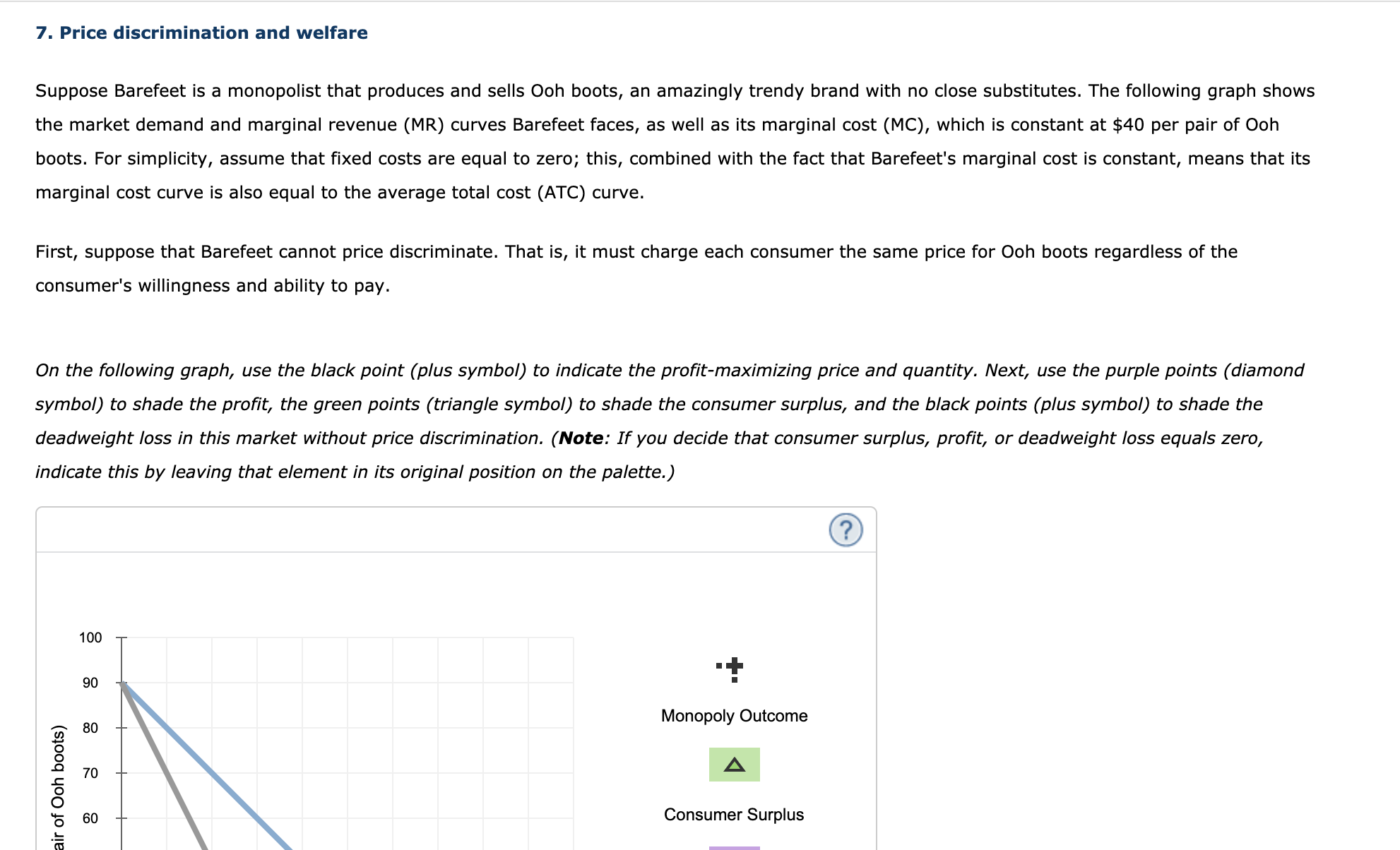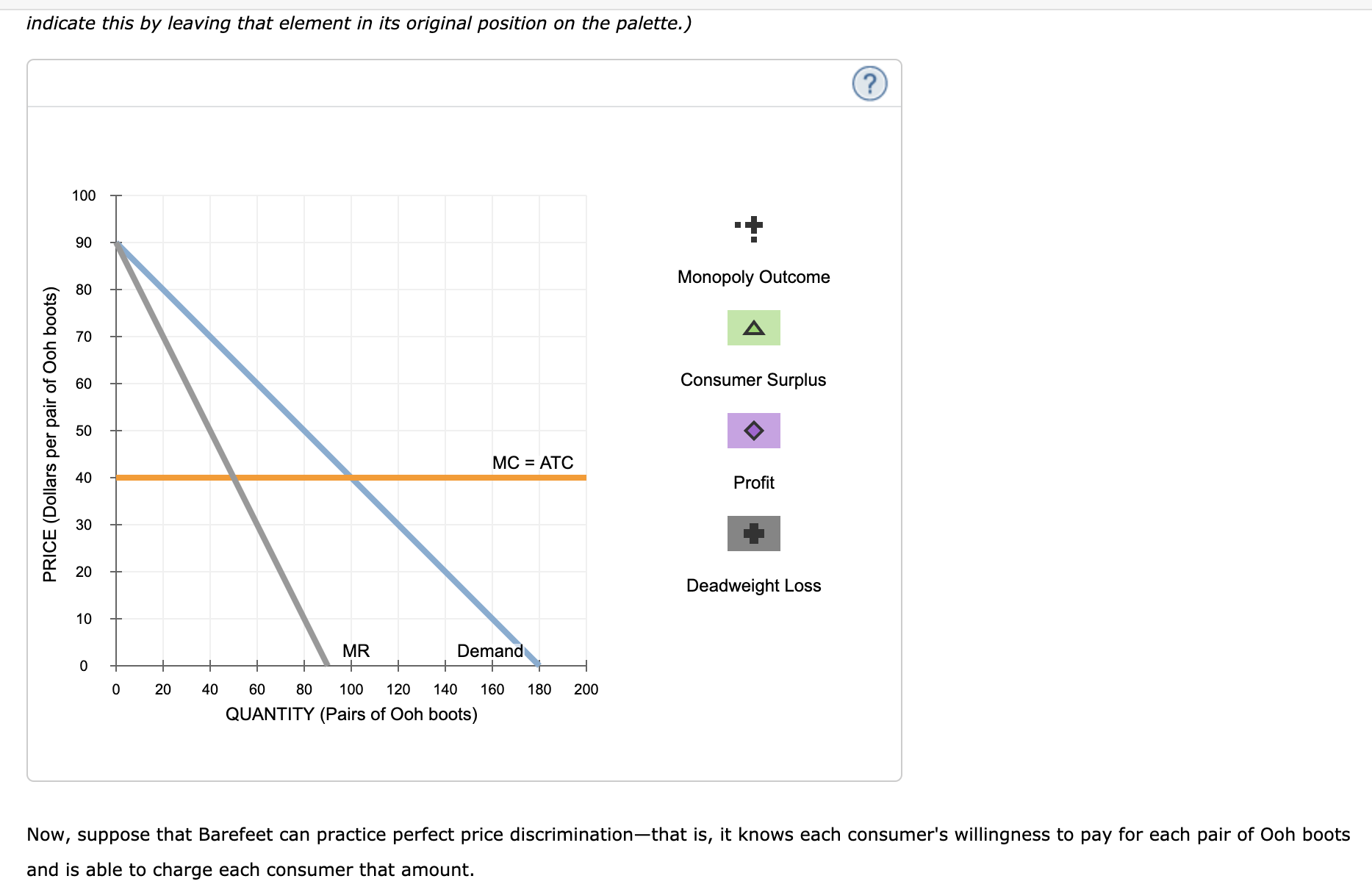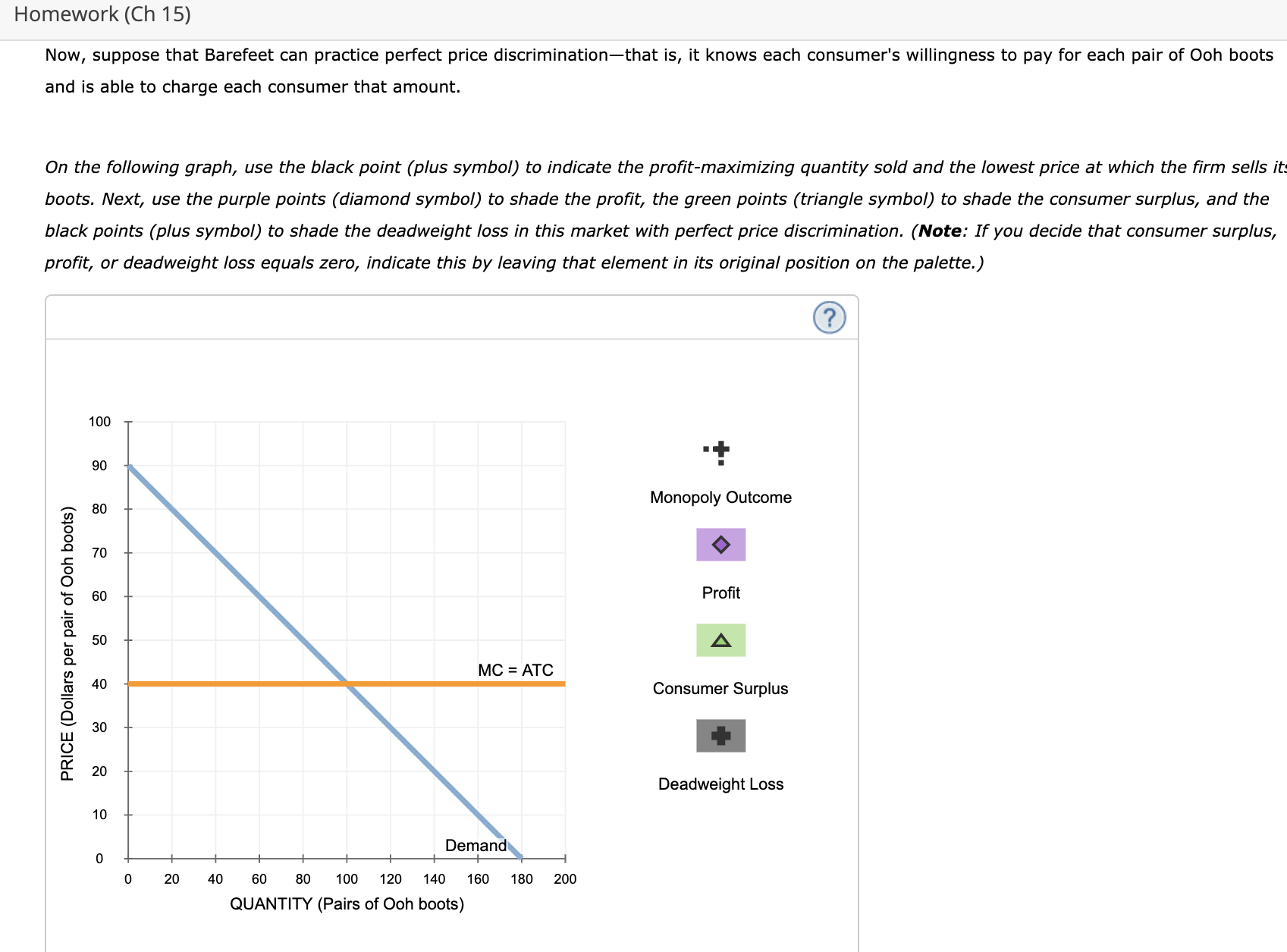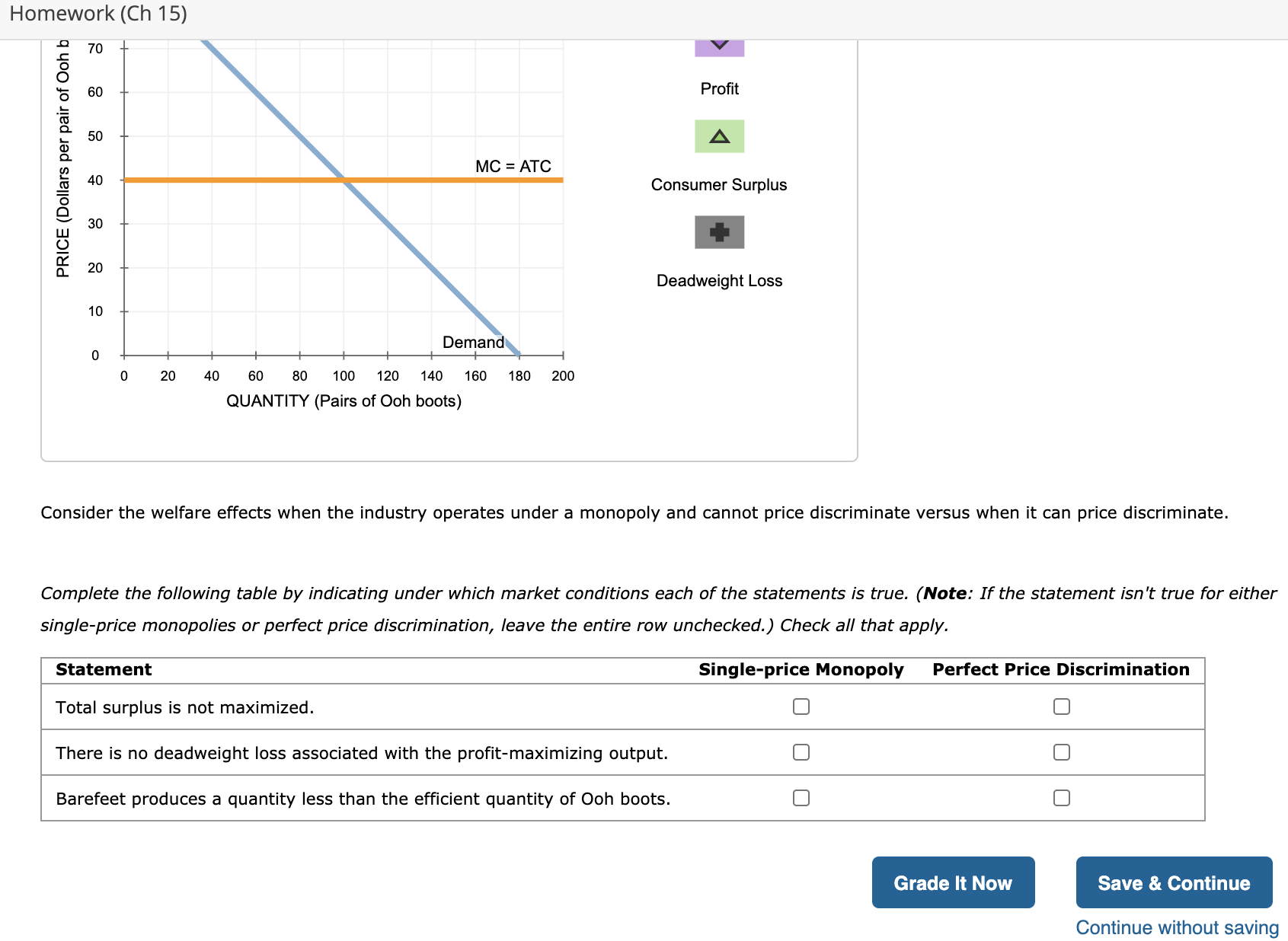7. Price discrimination and welfare
Suppose Barefeet is a monopolist that produces and sells Ooh boots, an amazingly trendy brand with no close substitutes. The following graph shows the market demand and marginal revenue (MR) curves Barefeet faces, as well as its marginal cost (MC), which is constant at $40 per pair of Ooh boots. For simplicity, assume that fixed costs are equal to zero; this, combined with the fact that Barefeet's marginal cost is constant, means that its marginal cost curve is also equal to the average total cost (ATC) curve.
7. Price discrimination and welfare Suppose Barefeet is a monopolist that produces and sells Ooh boots, an amazingly trendy brand with no close substitutes. The following graph shows the market demand and marginal revenue (MR) curves Barefeet faces, as well as its marginal cost (MC), which is constant at $40 per pair of Ooh boots. For simplicity, assume that xed costs are equal to zero; this, combined with the fact that Barefeet's marginal cost is constant, means that its marginal cost curve is also equal to the average total cost (ATC) curve. First, suppose that Barefeet cannot price discriminate. That is, it must charge each consumer the same price for Ooh boots regardless of the consumer's willingness and ability to pay. an the following graph, use the black point (plus symbol) to indicate the prot-maximizing price and quantity. Next, use the purple points (diamond symbol) to shade the prot, the green points (triangle symbol) to shade the consumer surplus, and the black points (plus symbol) to shade the deadweight loss in this market without price discrimination. (Note: If you decide that consumer surplus, prot, or deadweight loss equals zero, indicate this by leaving that element in its original position on the palette.) 100 . so 1r A 30 Monopoly Outcome g 70 A O O '5 60 Consumer Surplus ._ 'E indicate this by leaving that element in its original position on the palette.) "I- so Monopoly Outcome 70 A Consumer Surplus Prot Deadweight Loss 40 30 PRICE (Dollars per pair of Ooh boots) 8 20 10 Deman \\i o 20 4o 60 so 100 120 140 160 180 200 QUANTITY (Pairs of Ooh boots) Now, suppose that Barefeet can practice perfect price discriminationthat is, it knows each consumer's willingness to pay for each pair of Ooh boots and is able to charge each consumer that amount. Homework (Ch 15) Now, suppose that Barefeet can practice perfect price discriminationthat is, it knows each consumer's willingness to pay for each pair of Ooh boots and is able to charge each consumer that amount. On the following graph, use the black point (plus symbol) to indicate the prot-maximizing quantity sold and the lowest price at which the firm sells it: boots. Next, use the purple points (diamond symbol) to shade the prot, the green points (triangle symbol) to shade the consumer surplus, and the black points (plus symbol) to shade the deadweight loss in this market with perfect price discrimination. (Note: If you decide that consumer surplus, prot, or deadweight loss equals zero, indicate this by leaving that element in its original position on the palette.) 100 llII 90 ' Monopoly Outcome 7;; 80 '5 B I J: 70 8 '5 60 Prot a E 50 A 3 i2 MC=ATC g 40 ConsumerSurplus 5' 30 w I Q E 20 . Deadwelght Loss 10 Demand 0 20 40 so so 100 120 140 160 130 200 QUANTITY (Pairs of 00h boots) Homework (Ch 15) 2 m 8 "6 50 Prot .2 8 E 50 A e. 2 4n (=5 Consumer Surplus o D I 3 I 9 E 20 Deadweighl Loss 10 I Den-:iand\\t D l l l l l l I 0 20 40 60 80 100 120 140 160 180 200 QUANTITY (Pairs of Ooh boots) Consider the welfare effects when the industry operates under a monopoly and cannot price discriminate versus when it can price discriminate. Complete the following table by indicating under which market conditions each of the statements is true. (Note: If the statement isn't true for either singleprice monopolies or perfect price discrimination, leave the entire row unchecked.) Check all that apply. Statement Single-price Monopoly Perfect Price Discrimination Total surplus is not maximized. There is no deadweight loss associated with the protmaximizing output. Barefeet produces a quantity less than the efcient quantity of Ooh boots. Grade It Now Save & Continue Continue without saving










